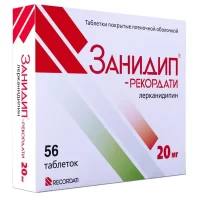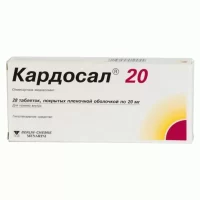$19.00
Manufacturer: Poland
Purpose: Telmisartan blocks angiotensin receptors to lower blood pressure and treat hypertension.
Description
Telmista H 40 (telmisartan) tablets 40 mg/12.5 mg. №28
Ingredients
Each tablet contains 40 mg of telmisartan and 12.5 mg of hydrochlorothiazide.
Dosage
The usual recommended dose is one tablet once daily. It is important to follow the dosage instructions provided by your healthcare provider.
Indications
Telmista H 40 tablets are indicated for the treatment of hypertension. This medication helps to lower blood pressure, reducing the risk of heart attack and stroke.
Contraindications
Do not take Telmista H 40 if you are allergic to telmisartan, hydrochlorothiazide, or any other ingredients in the tablets. It is also contraindicated in pregnancy and severe renal impairment.
Directions
Take Telmista H 40 exactly as prescribed by your doctor. It can be taken with or without food. Do not stop taking the medication without consulting your healthcare provider.
Scientific Evidence
Telmisartan, the active ingredient in Telmista H 40, is an angiotensin II receptor blocker (ARB) that works by relaxing blood vessels. This action helps to lower blood pressure and improve blood flow. Hydrochlorothiazide, a diuretic, helps the body get rid of excess salt and water, further lowering blood pressure.
Clinical trials have shown that the combination of telmisartan and hydrochlorothiazide is effective in reducing blood pressure levels in patients with hypertension. The synergistic effect of these two medications provides better control of blood pressure compared to using either drug alone.
Additional Information
It is important to monitor your blood pressure regularly while taking Telmista H 40. Inform your doctor about any side effects or concerns you may have. Avoid alcohol and certain medications that can increase the risk of low blood pressure when taking Telmista H 40.
Always consult your healthcare provider before starting or stopping any medication. Follow a healthy lifestyle with a balanced diet, regular exercise, and stress management to complement the effects of Telmista H 40 in managing hypertension.







Recent Reviews